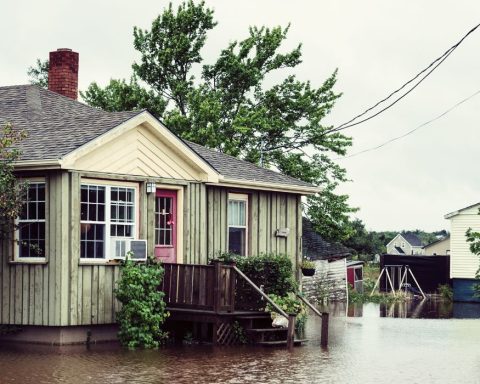The 27th UN climate summit, COP27, which got underway in Egypt on Sunday, seems to have been pre-ordained as a modest contribution to the increasingly fraught fight against climate change.
Seen as an occasion for developing nations to express their mounting frustrations with the lack of action and resources from the Global North, COP27 has been marred by low expectations and the absence of some national leaders (including Prime Minister Justin Trudeau, whose government is surely aware of polls showing that climate is not a top-of-mind issue right now). “There are big climate summits and little climate summits and this was never expected to be a big one,” Climate Advisers CEO Nigel Purvis, a former U.S. negotiator, told the Associated Press.
The same could be said of the climate moves in last week’s fall economic statement, tabled by Finance Minister Chrystia Freeland on Thursday. The document was more about the Liberal government’s attempt to roll back inflation and spending than it was about teeing up a major climate conference with some showcase policies, as has been the case before.
The plan earmarked $310 million over the next five years for skills training in the low-carbon economy as well as $6.65 billion in investment tax credits for clean technologies and clean hydrogen production, provided the latter meets standards set out in the Inflation Reduction Act, the giant U.S. spending bill that pumps hundreds of billions of dollars into climate investments.
According to government documents, the tax credit – equivalent to 30% of the capital cost of low-carbon systems – applies to solar, wind and water energy equipment, as well as batteries, compressed-air energy storage, air- and ground-source heat pumps, small modular nuclear reactors, and zero-emission vehicles and chargers used on mining or construction sites.
The tax credit, however, will be available only to businesses, not residential property owners, which means the focus of this initiative, in terms of reducing carbon from buildings, will be on commercial and industrial landlords, although it’s possible contractors could claim the credit in purchasing low-carbon equipment and pass it on to their customers.
The government’s decision to specifically target electricity storage technologies bears noting. While some jurisdictions, like California, have moved to require that certain types of development include electricity storage devices as a fallback in the event of blackouts or overloaded grids, they have yet to gain widespread use or policy attention in Canada.
While there are some property managers running pilot projects, there’s been little wide-scale adoption because the equipment is expensive and doesn’t yet offer attractive returns. “This new tax credit can make these hybrid systems more attractive to developers,” says Richard Carlson, director of energy policy for Pollution Probe, adding that the tax credit is well designed for corporate investors.
There are big climate summits and little climate summits and this was never expected to be a big one.
-Climate Advisers CEO Nigel Purvis
But targeted incentives for electricity storage devices, like batteries or compressed air, could theoretically expand investment in renewables like wind and solar, which generate power intermittently. They could also foster the development of so-called microgrids – renewable electricity generation and storage systems installed on large commercial or industrial sites that allow them to reduce their exposure to high peak-period rates. “We need all of these solutions,” says Tom-Pierre Frappé-Sénéclauze, buildings program manager for the Pembina Institute.
He adds that electricity storage systems – basically banks of stationary batteries – are most cost effective when built on a larger scale. They are also an essential component of low- or no-carbon grids that include renewables like wind and solar. As the International Energy Agency notes, “The rapid scaling up of energy storage systems will be critical to address the hour‐to‐hour variability of wind and solar PV electricity generation on the grid, especially as their share of generation increases rapidly in the Net Zero Scenario.”
While the Liberals have attempted to kickstart business investment in electricity storage in commercial and industrial properties, Frappe-Sénéclauze says the move falls well short of the much more daunting problem of retrofitting existing buildings, and particularly Canada’s 16 million residential dwellings. Carlson adds that nothing in the fall economic statement targets low-income households or energy efficiency in apartment buildings, as is the case in the U.S.
Ultimately, Canadian governments, says Frappe-Sénéclauze, still need to find a way to encourage about $10 to $15 billion a year in home energy retrofits – everything from insulation and triple-pane windows to heat pumps and solar panels – in order to meet Canada’s building emissions targets of 40 to 50% below 2005 levels by 2030, and net-zero by 2050. “The retrofit economy needs to be seen as a nation-building-type effort over the next 20 years,” he says. “None of the programs that have been announced to date have that.”
Doubly unfortunate is the fact that COP27, which will go on all week, is unlikely to shame Ottawa into filling that particular gap.







